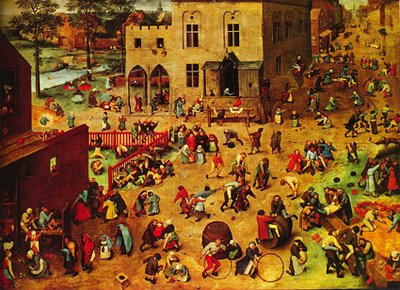
Ricky Swallow - Everything is Nothing (2003)
'Everything is Nothing...is a portrait of the artist as a dead man. All that sets this skull apart from all the others in the world is a nick in its front tooth. It replicates a chip in Swallow's. All that pins the skull to our time is an adidas ski-hat. The skull wears it like a second skin.
Everything is Nothing began its life as a stump not much bigger than a football. It was strange to watch as the artist slowly worked toward his head with his hands. Early on, the object looked muffled and gnawed-at, as if fashioned by an impatient beaver. Swallow took back the wood with scoops and chisels, boring into its surface and creating chunky ridges and valleys. Then he brought out rasps and scrapers to reduce the ridges to scars, which in their turn got worn toward smoothness by sheet after sheet of sandpaper. From 320 grains per sheet to 600, then from 1000 to 1600, the advance through the wood grew slower. At some point carpentry became manicure, and the steady fall of chips and shavings slowed into occasional drifts of powder. There at last, its surface polished smooth as marble, was Ricky Swallow's grinning skull - toppled from its body, one ear to the ground, softly wrapped in its fabric helmet.
The sculpture puts us face-to-face with a paradox. Its emergence is also a disappearance. It gives absence an absolutely vivid presence. Less a producer than a reducer - an un-maker, a subtraction artist - Swallow has given time to the wood, and the result shows what time will take from him. Of course, every carving makes something by taking something away, and every self-portrait is haunted by its maker's absence. But, by sculpting himself from the future's point of view, Swallow puts that absence at the heart of the matter. The result is a self-portrait, 'finished' in both senses, which seems to wait for the artist to catch up. In the meantime the object makes an irresistible offer to onlookers. The raised edge of the ski-hat is a sly, beckoning detail. As if gingerly lifted by an invisible finger, it invites queasy, contemplative inspection of the skull inside - its crenellations, fault-lines and crumple zones, the blade of its septum, the empty air of its orbits, and above all its lock-jawed grin. Through its wooden silence, this sculpture has something to tell us about the tests of time, the patience of objects, and the ratio of loss to gain.'
From Ricky Swallow: Field Recordings by Justin Paton
'Everything is Nothing...is a portrait of the artist as a dead man. All that sets this skull apart from all the others in the world is a nick in its front tooth. It replicates a chip in Swallow's. All that pins the skull to our time is an adidas ski-hat. The skull wears it like a second skin.
Everything is Nothing began its life as a stump not much bigger than a football. It was strange to watch as the artist slowly worked toward his head with his hands. Early on, the object looked muffled and gnawed-at, as if fashioned by an impatient beaver. Swallow took back the wood with scoops and chisels, boring into its surface and creating chunky ridges and valleys. Then he brought out rasps and scrapers to reduce the ridges to scars, which in their turn got worn toward smoothness by sheet after sheet of sandpaper. From 320 grains per sheet to 600, then from 1000 to 1600, the advance through the wood grew slower. At some point carpentry became manicure, and the steady fall of chips and shavings slowed into occasional drifts of powder. There at last, its surface polished smooth as marble, was Ricky Swallow's grinning skull - toppled from its body, one ear to the ground, softly wrapped in its fabric helmet.
The sculpture puts us face-to-face with a paradox. Its emergence is also a disappearance. It gives absence an absolutely vivid presence. Less a producer than a reducer - an un-maker, a subtraction artist - Swallow has given time to the wood, and the result shows what time will take from him. Of course, every carving makes something by taking something away, and every self-portrait is haunted by its maker's absence. But, by sculpting himself from the future's point of view, Swallow puts that absence at the heart of the matter. The result is a self-portrait, 'finished' in both senses, which seems to wait for the artist to catch up. In the meantime the object makes an irresistible offer to onlookers. The raised edge of the ski-hat is a sly, beckoning detail. As if gingerly lifted by an invisible finger, it invites queasy, contemplative inspection of the skull inside - its crenellations, fault-lines and crumple zones, the blade of its septum, the empty air of its orbits, and above all its lock-jawed grin. Through its wooden silence, this sculpture has something to tell us about the tests of time, the patience of objects, and the ratio of loss to gain.'
From Ricky Swallow: Field Recordings by Justin Paton





